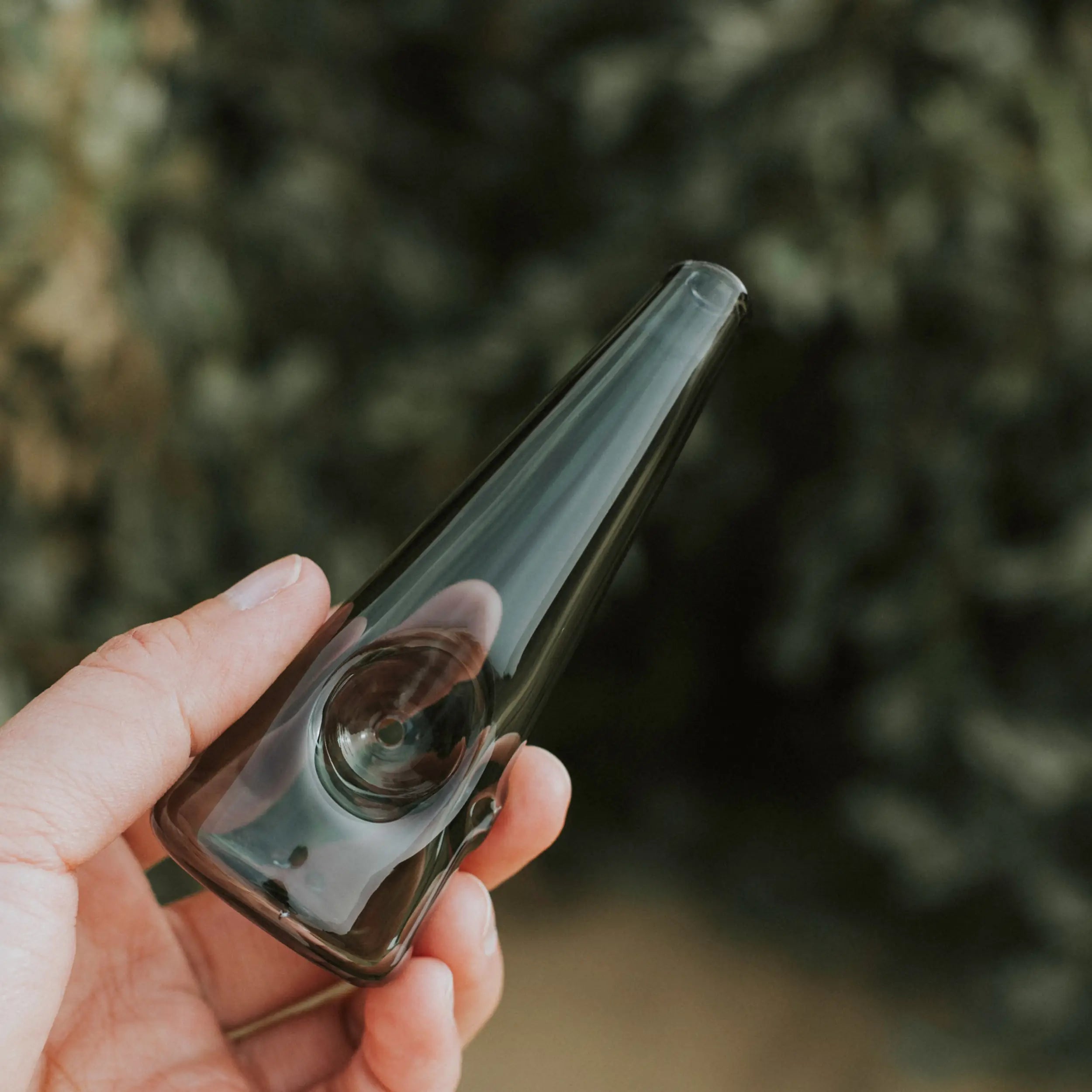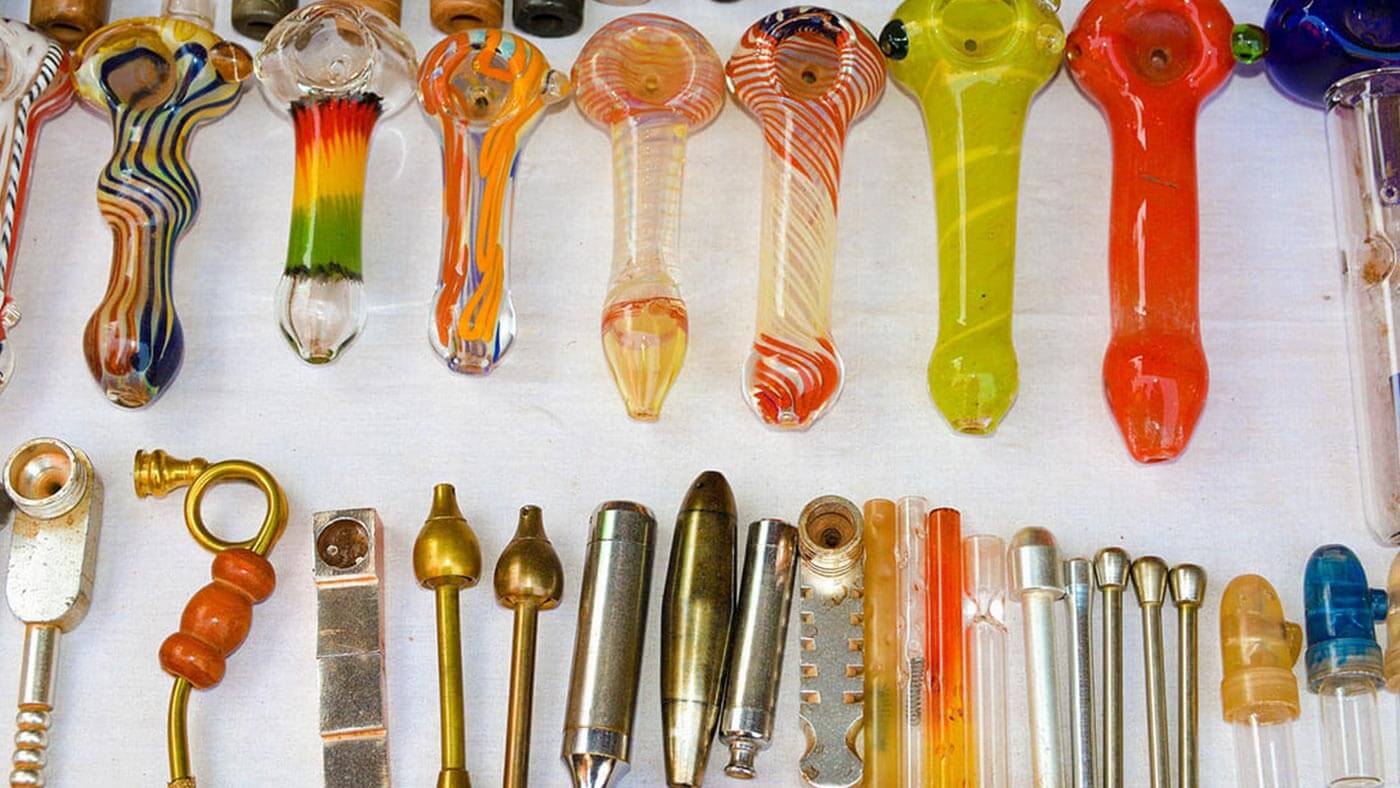Cannabis enthusiasts always seek unique and creative ways to enjoy their favorite herb. One such method is through the use of glass pipes.
These intricately designed pieces of art not only serve as functional tools for smoking weed and showcase the incredible creativity and craftsmanship of glassblowing artists. This blog will look closer at weed glass pipes’ history, types, materials, and artistry, providing you with a newfound appreciation for these remarkable smoking accessories.
Table of Contents
History of Cannabis Glass Pipes
The history of cannabis glass pipes can be traced back thousands of years, with early civilizations such as the Ancient Egyptians and Romans using glass for various purposes, including creating glass pipes. However, it wasn't until the late 20th century that glass pipes specifically designed for cannabis consumption emerged in the market.
Modern glass pipes originated in the United States during the 1960s and 1970s, with the counterculture movement and the increasing popularity of weed. Glass artists and enthusiasts began experimenting with new designs and techniques, creating more intricate and functional pipes for cannabis consumption.
This experimentation led to the development of unique glassblowing techniques, such as fuming, which involves the incorporation of precious metals like gold or silver to create a range of beautiful colors within the glass. Today, cannabis glass pipes are a thriving global market, with artists and manufacturers worldwide producing an incredible variety of glass pipes to suit every taste and preference.
Types of Weed Glass Pipes
Several types of modern weed glass pipes are available in the market, with each style offering a unique smoking experience. Some of the most popular types of weed glass pipes include:
Spoon Pipes: These are the most common type of glass pipe, characterized by their spoon-like shape and a carburetor hole on the side for controlling airflow. Spoon pipes are perfect for beginners due to their simplicity and ease of use.
Sherlock Pipes: Inspired by the iconic pipe used by Sherlock Holmes, these pipes feature a curved neck and a deep bowl that allows for a smoother and cooler smoking experience.

Bubblers: Bubblers are a hybrid between a glass pipe and a water pipe, featuring a chamber for water filtration that helps to cool and purify the smoke before inhalation. This results in a smoother and more enjoyable smoking experience.

Chillum Pipes: Also known as one-hitters, chillum pipes are small, straight glass tubes perfect for a quick and discreet smoking session.
Steamrollers: These pipes feature a large, cylindrical chamber with an open end that functions as a mouthpiece and a carburetor. Steamrollers provide a powerful and intense smoking experience due to the direct inhalation of smoke.

Materials Used in Weed Glass Pipes
The most commonly used material for making a glass pipe is borosilicate glass. This type of glass is known for its durability, heat resistance, and ability to withstand thermal stress, making it ideal for creating smoking accessories. Borosilicate glass is also non-toxic and easy to clean, ensuring a safe and enjoyable smoking experience.
Other materials found include soft glass, known for its vibrant colors and unique patterns but less durable than borosilicate glass. Some glass pipes also feature dichroic glass, which contains multiple layers of metallic oxides that create an iridescent, color-shifting effect.
Artistry and Craftsmanship in Cannabis Glass Pipes
The artistry and craftsmanship involved in creating a cannabis glass pipe is truly remarkable. Glassblowing artists use techniques such as fuming, implosions, and encasements to create intricate designs and patterns in their pipes.
Some glass pipes are adorned with detailed sculptures, while others showcase mesmerizing color combinations and patterns. The possibilities are endless, and the artist's skill plays a significant role in the outcome of each pipe.
Recently, cannabis glass pipes have seen a surge in collaborations between different artists, resulting in unique and innovative designs that push the boundaries of glass art. These collaborations often lead to highly sought-after limited-edition pieces by collectors and enthusiasts alike.

Conclusion
A designer glass pipe is a true testament to the creativity and skill of glassblowing artists. With a rich history, various types and materials, and incredible artistry, these smoking accessories offer not only a practical means of enjoying cannabis but also a visually stunning piece of art.
As the cannabis industry continues to grow and evolve, there is no doubt that modern glass pipes will continue to flourish and captivate enthusiasts for years to come.
















![[in] session blog escape to goulding house and watching the leaves change](http://sessiongoods.com/cdn/shop/articles/escape_goulding_summer_house_1f0cdfcd-bc35-4cab-a079-41a0287e3b10.jpg?crop=center&height=1145&v=1762960209&width=1145)
![[in] session blog — Inspiring interviews, articles about cannabis & design](http://sessiongoods.com/cdn/shop/files/session-goods-homepage-insession-blog-mobile_63644ba1-0223-434b-b77e-5f4a30d7375f.webp?v=1692127377&width=600)